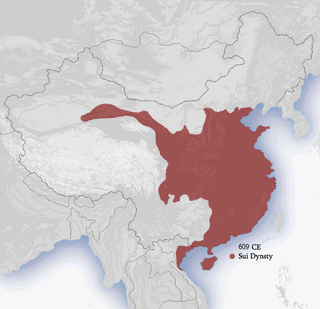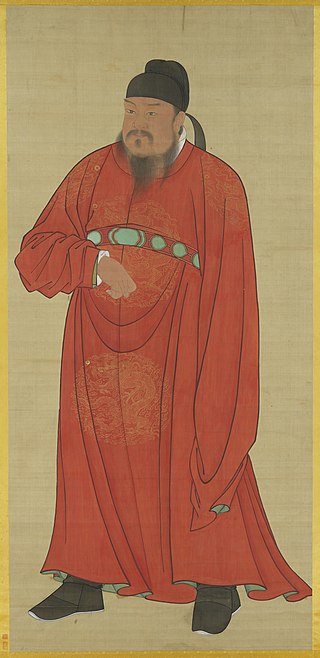The 620s decade ran from January 1, 620, to December 31, 629.
The 730s decade ran from January 1, 730, to December 31, 739.
The 610s decade ran from January 1, 610, to December 31, 619.
The 640s decade ran from January 1, 640, to December 31, 649.
The 500s decade ran from January 1, 500, to December 31, 509.
The 550s decade ran from January 1, 550, to December 31, 559.
The 570s decade ran from January 1, 570, to December 31, 579.
The 580s decade ran from January 1, 580, to December 31, 589.
The 590s decade ran from January 1, 590, to December 31, 599.

Year 630 (DCXXX) was a common year starting on Monday of the Julian calendar. The denomination 630 for this year has been used since the early medieval period, when the Anno Domini calendar era became the prevalent method in Europe for naming years.

Year 626 (DCXXVI) was a common year starting on Wednesday of the Julian calendar. The denomination 626 for this year has been used since the early medieval period, when the Anno Domini calendar era became the prevalent method in Europe for naming years.

Year 581 (DLXXXI) was a common year starting on Wednesday of the Julian calendar. The denomination 581 for this year has been used since the early medieval period, when the Anno Domini calendar era became the prevalent method in Europe for naming years.

Year 587 (DLXXXVII) was a common year starting on Wednesday of the Julian calendar. The denomination 587 for this year has been used since the early medieval period, when the Anno Domini calendar era became the prevalent method in Europe for naming years.

Year 553 (DLIII) was a common year starting on Wednesday of the Julian calendar. The denomination 553 for this year has been used since the early medieval period, when the Anno Domini calendar era became the prevalent method in Europe for naming years.

Year 572 (DLXXII) was a leap year starting on Friday of the Julian calendar. The denomination 572 for this year has been used since the early medieval period, when the Anno Domini calendar era became the prevalent method in Europe for naming years.

Year 618 (DCXVIII) was a common year starting on Sunday of the Julian calendar. The denomination 618 for this year has been used since the early medieval period, when the Anno Domini calendar era became the prevalent method in Europe for naming years.
Istämi was the ruler of the western part of the Göktürks, which became the Western Turkic Khaganate and dominated the Sogdians. He was the yabgu (vassal) of his brother Bumin Qaghan in 552 AD. He was posthumously referred to as khagan in Turkic sources. His son was Tardu.
The First Turkic Khaganate, also referred to as the First Turkic Empire, the Turkic Khaganate or the Göktürk Khaganate, was a Turkic khaganate established by the Ashina clan of the Göktürks in medieval Inner Asia under the leadership of Bumin Qaghan and his brother Istämi. The First Turkic Khaganate succeeded the Rouran Khaganate as the hegemonic power of the Mongolian Plateau and rapidly expanded their territories in Central Asia. The khaganate became the first Central Asian transcontinental empire from Manchuria to the Black Sea.

The conquest of the Western Turks, known as the Western Tujue in Chinese sources, was a military campaign in 655–657 led by the Tang dynasty generals Su Dingfang and Cheng Zhijie against the Western Turkic Khaganate ruled by Ashina Helu. The Tang campaigns against the Western Turks began in 640 with the annexation of the Tarim Basin oasis state Gaochang, an ally of the Western Turks. Several of the oasis states had once been vassals of the Tang dynasty, but switched their allegiance to the Western Turks when they grew suspicious of the military ambitions of the Tang. Tang expansion into Central Asia continued with the conquest of Karasahr in 644 and Kucha in 648. Cheng Zhijie commanded the first foray against the West Tujue, and in 657 Su Dingfang commanded the main army dispatched against the Western Turks, while the Turkic generals Ashina Mishe and Ashina Buzhen led the side divisions. The Tang troops were reinforced by cavalry supplied by the Uyghurs, a tribe that had been allied with the Tang since their support for the Uyghur revolt against the Xueyantuo. Su Dingfang's army defeated Helu at the battle of Irtysh River.

The Tang campaigns against the Western Turks, known as the Western Tujue in Chinese sources, were a series of military campaigns conducted by the Tang dynasty against the Western Turkic Khaganate in the 7th century AD. Early military conflicts were a result of the Tang interventions in the rivalry between the Western and Eastern Turks in order to weaken both. Under Emperor Taizong, campaigns were dispatched in the Western Regions against Gaochang in 640, Karasahr in 644 and 648, and Kucha in 648.








